#Prestel Publishing
Explore tagged Tumblr posts
Text

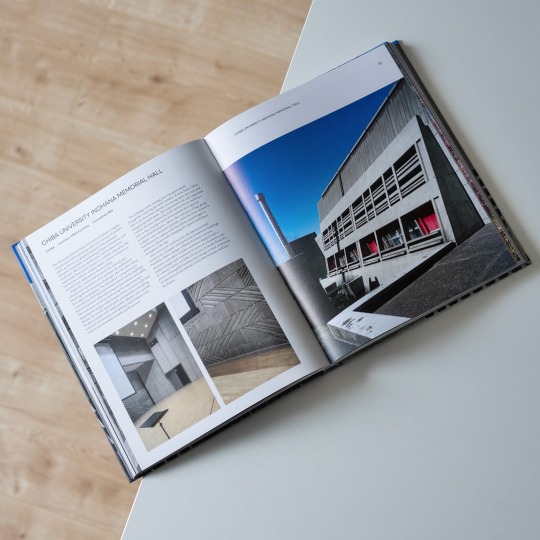
The built manifestations of Brutalism, despite their omnipresence on social media, remain controversial: especially in Europe they are loved by some and hated by many. In other parts of the world opinions aren’t as polarized and Brutalism simply a part of the built environment, e.g. in Japan. Okinawa-based photographer Paul Tulett has been exploring the Japanese brutalist heritage for years and in his new book „Brutalist Japan“, recently published by Prestel, points to the particular appeal concrete had in postwar Japan: it offered seismic safety, was resistant to termites and easy to pour in form and via the shuttering boards also left room for the skilled Japanese wood crafts. At the same time the Japanese tradition for leaving natural materials rough and raw played in the hands of „béton brut“ that, as Tulett explains, became „béton nécessaire“.
The former’s gradual aging and the acceptance thereof agains roots in Japanese tradition, i.e. the concepts of „wabi sabi“ and „mono no aware“ which embrace the beauty of imperfection and describe the ambivalent awareness of the fleeting nature of beauty. Against this background and Tulett’s introduction to Japanese philosophies it becomes easier to understand why Brutalism is a lot less controversial in Japan than it is in other parts of the world and never disappeared. Accordingly the buildings gathered in „Brutalist Japan“ date from the 1950s to the present day and offer a comprehensive panorama of Brutalism in Japan: in brilliant photographs Tulett shows classics like Kenzo Tange’s Hiroshima Peace Memorial Museum (1955) and Setagawa Ward Office (1959) or Le Corbusier’s National Museum of Western Art (1959) but also a plethora of little-known buildings. And they are compelling: the fortress-like Tanimura Art Museum (1983) by Togo Murano, the Keihan Uji Station (1995) by Hiroyuki Wakabayashi or the Okinawa Prefectural and Art Museum (2007) by Ishimoto and Niki Associates demonstrate the masterful use of raw concrete while also dealing with Japanese history and traditions.
This beautifully crafted mix of buildings makes the book a great read and an eye-opening survey of Japanese Brutalism. Highly recommended!
199 notes
·
View notes
Text
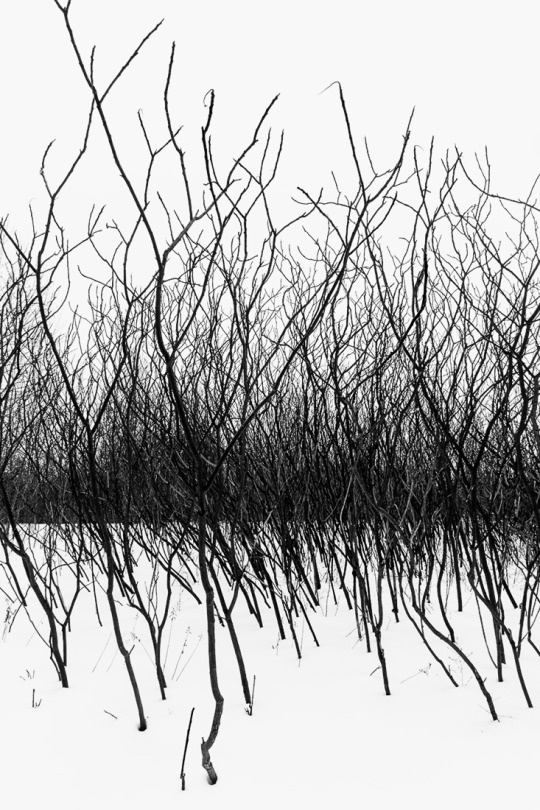
A beautiful photograph by a dear friend Sasa Gyoker from her numerous award winning works.
"Season of Silence"
Sasa tells: "In this series I have gathered works I took in winter. I live in Canada, and this season here can be a fertile terrain for meditative albeit fiercely cold walks. I find winter accentuates the graphic qualities of nature, while offering an invitation into a contemplative state enriched by silence."
"Sasa was born and lived in Budapest, Hungary, before moving to Canada. After completing her M.A. degree in Art History and working as a Curatorial Assistant at the National Gallery of Canada, she returned to study—this time graphic design, which has been her vocation ever since. In tandem with graphic design, her interest in and passion for photography has been growing stronger through the years. Her album, Of Trees and Birds and Snow and Silence, was published in 2015. Since then, she has won several international photography awards, and has participated in both solo and juried group exhibitions in Canada, the United States, Europe, and South Korea. Her works have been published and used for cover pages in books, albums, blogs, posters, literary journals and photo magazines, including her photograph in David Gibson: 100 Great Street Photographs (Munich, London, New York: Prestel, 2017), D. Tyler Bennett: The Coffee House Anthology—A Meeting Place for the Arts (Charnwood Arts, UK, 2016) as well as in LensCulture and Lomography Magazine, among others. Her photographs have also been shown in exhibitions worldwide, such as in the international juried exhibition at the Kiscelli Museum in Budapest, Hungary, a venue of the 2019 Budapest Photo Festival, and the exhibition of over 30 of her works at the ArtReach Gallery in Portland, Oregon, in 2021."
https://monovisionsawards.com/.../monovisions.../show/2206
37 notes
·
View notes
Text

Top half of the 'Virgil Abloh: Figures of Speech Special Edition' cover, a book published by Delmonico-Prestel in 2019 for the Figures of Speech exhibition in MCA (Chicago, US) from June 10 until September 22 2019. follow on Instagram for more
#virgil abloh#Delmonico#Prestel#Virgil Abloh: Figures of Speech#off-white#art#fashion#2019#exhibition#Figures of Speech#special edition#MCA
37 notes
·
View notes
Photo










Wild Flowers of North America
Botanical Ilustrations by Mary Vaux Walcott
Pamela Henson
Prestel Publishing, New York/London 2022, 336 pages, Hardcover, 24 x 32 cm, 300 color illustrations, Isbn 9783791388892
Published in association with the Smithsonian Institution
euro 62,00
email if you want to buy [email protected]
Now available in a new, large single volume with an appendix also listing the modern plant names, this classic collection by “the Audubon of botany” features more than 250 exquisite reproductions of Walcott’s celebrated watercolors of wildflower life in the United States of America and Canada. What does it take to paint a wildflower that blooms for a single day in a deep forest? For Mary Vaux Walcott, it involved spending up to seventeen hours a day out of doors with her paintbox to capture the shape, movement, and colors of delicate petals and leaves. Originally published in 1925 to enormous acclaim in five, oversized volumes, Walcott’s sketches introduced the diversity and beauty of North American plants to the general public. A selection of some of the most stunning illustrations are now available in a single volume, these illustrations have lost none of their beauty or realism. Walcott’s technique involved precise attention to detail, color, light, and perspective. Her art can also be appreciated as the work of a woman scientist battling the prejudices against her sex of the day. She was an intrepid explorer, skilled geologist, and generous benefactor to the Smithsonian Institution at a time when women’s accomplishments were often overlooked or misattributed. 21/04/23
orders to: [email protected]
ordini a: [email protected]
twitter: @fashionbooksmilano
instagram: fashionbooksmilano, designbooksmilano tumblr: fashionbooksmilano, designbooksmilano
#Wild Flowers N.America#Mary Vaux Walcott#watercolors#1925 published#North America Plants#Smithsonian Institution#fashionbooksmilano
15 notes
·
View notes
Photo
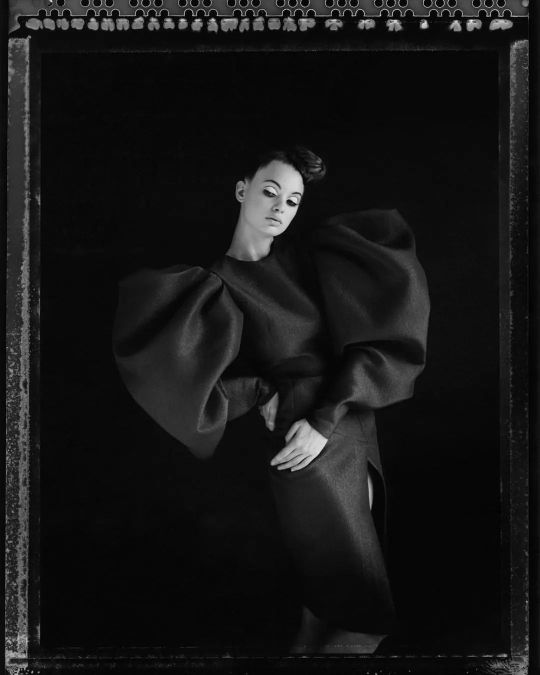
Reposted from @cathleennaundorf Last print. Size 20 x 30 cm . Silver gelatin print. Signed,stamped. Edition of 2 !! Photograph “La Passion I ” Order: Dm me or [email protected] Published in my book” The Polaroids of Cathleen Naundorf” Prestel 2012 #cathleennaundorf #artwork #fineartphotography #artisticphotigraphy #artistoftheday #fotografiska #palmbesch #miamiart #parisartist #artcollector #blackandwhitephotography #artbasel #parisphoto #fashionphotographer #armoryshow #classicphotography #irvingpenn #horstphotst #timealker #photocollection @ilfordphoto#eugenelacroix1 @eugenelacroix1 #photography https://www.instagram.com/p/Comg22KIbO2/?igshid=NGJjMDIxMWI=
#cathleennaundorf#artwork#fineartphotography#artisticphotigraphy#artistoftheday#fotografiska#palmbesch#miamiart#parisartist#artcollector#blackandwhitephotography#artbasel#parisphoto#fashionphotographer#armoryshow#classicphotography#irvingpenn#horstphotst#timealker#photocollection#eugenelacroix1#photography
3 notes
·
View notes
Text
Photographer Research Post 7
The Narrative Genius of Tyler Mitchell Tyler Mitchell is the introducer of modern portraiture photography. He was born in 1995 in Georgia. He is the first person from the black community who work for a Vogue for its cover. This is the first time in Vogue magazine, made history in 126 years. He features Beyonce on the Magazine cover, which makes him a pioneer of his style and builds his reputation, making him one of the great pictures to look for photographers of this generation. His pictures were full of identity, joy, and beauty of Black life.
I admired his one artwork, released in 2019: I Can Make You Feel Good. This picture is about black people enjoying their moment. It was exhibited at the International Center of Photography in New York. The picture is rich in colors and bright, and using soft lights is awesome, making me feel warm and inviting. The subject is about dreams, peace, relaxation, and enjoying the moment. One of the Iconic pictures from this series shows a young man, lying on the ground at a blanket, and his clothes color matches the tone around his surroundings. This is simple but makes you feel relaxed and calm.
I am impressed with the joyful nature, that he puts his artwork. It makes me feel about the positivity. Also tells me to enjoy the moment. His style of telling a story through his images inspired me deeply to use visual elements to tell my own story. Whether, in design, photography, or animation.
His work has been published in major places like the Tate Modern in London and the Foam Foto Graphic Museum in Amsterdam. He also released is book named I Can Make you Feel Good, where you can see his style and creative skills. Many art critics loved his style of mixing beauty and activism, which are
If you want to explore more about him, You can check out his website or read articles about him in Artforum and The New York Times. These sources could be a great place to learn more about his style experience and techniques.
References
"I Can Make You Feel Good" – Prestel Publishing, 2020.
Artforum, review of "I Can Make You Feel Good" exhibition, 2019.
The New York Times, profiles and interviews with Tyler Mitchell.
International Center of Photography, exhibition details, 2019.
image source: https://gupmagazine.com/wp-content/uploads/2020/11/ICMYFG-Book_003-scaled.jpg
0 notes
Link
Check out this listing I just added to my Poshmark closet: Land of the Rising Cat: Japan's Feline Fascination Paperback -September 10, 2019.
0 notes
Text
Mid-century science fiction gave post war america a future to look forward too. The hope was that advancements in nucular energy and space travel would unite humanity. In retrospect, these ideas sound silly; there was no way space travel would ever improve the day to day lifes of civilians. However, this childlike outlook is what makes the genre so charming. As Sean Topham argues: The space age allowed adults to rediscover everyday miracles kinda like a child does [Topham, S. (2008). A question of living tommarrow. In Wheres my Space Age? (pp. 65–66). essay, Prestel.]
Not all science fiction was so optimistic however; many writers believed contemporary advancements in nuclear energy threatened international security. Zines like “astounding sci-fi” were inidated with post apocalyptic fiction and tales of technological uprisings.
Science fiction helped laymen navigate cold war politics in ways actual (political) scienests could not. Said “experts” had no real world reference to which they could compare the contempary nuclear-political landscape. Therefor, in David Seed’s opinion, science fiction writers had an equal amount of athourity. [Seed, D. (1999). Chapter 1. In American Science Fiction and the Cold War (pp. 5–5). essay, Fitzroy Dearborn.]
Ive been a retro futuristic fan since I was introduced to the twilight zone in elementary school. Some years later I discovered the “retro space” line of lego sets. Although these kits released between 1979-1998, the designers were heavily inspired by science fiction of old. The sets were characterized by funky looking aircraft, vauge tech, and a generally cooperative atmosphere. My own lego builds are inspired by the line but also retro futurism in general. As an aside: i love the lego system. Its my main art medium. Ive included some pics down below😋
Throught my project i consulted 3 books, 1 movie, 1 tv show, and 1 zine. The names are as follows:
Books:
“American Science fiction: 1926-1975”: former science fiction writer ______ records the history of retro futurism and what inspired the movement.
“Wheres my Space Age?” A history of the rise and fall of retro-futuristic design styles in the real world
“Science fiction Literature and Film during the Cold war”: ___ explains the historical context in which retro fururism emeraged.
Movies:
FORBIDDEN PLANET: This 1952 adventure film took inspiration from contemporary science fiction litiuture like “ASTOUNDING SCIENCE FICTION” and “GALAXY”. The film follows a group of stranded astronauts as they navigate a mysterious planet. Good movie.
Zines:
ASTOUNDING(/ANOLOG) SCIENCE FICTION AND FACT :Established in 1930, This monthly zine routinely published innovative Sci-Fi stories along side sensationalized scientific news. The publication was led by renowned writer John Campbell Jr. who, in 1950, began researching psi phenomena (scientific study of physic powers). Campbell’s work inspired fellow artist to write about contemporary psudeo science.
Shows:
THE TWILIGHT ZONE:The Twilight Zone, narrated by Rob Serling, was a revolutionary anthology series that used science fiction to tackled issues of race, religion, oppresion and more. My grandparents introduced me to this show, and by extension retro futurism. To this day the Twilight Zone remains my favorite telivision series. I highly recommend the episodes: “The Monsters are due on Maple Street” and “I Shot an Arrow into the Air”. (images included in next post->)
0 notes
Text
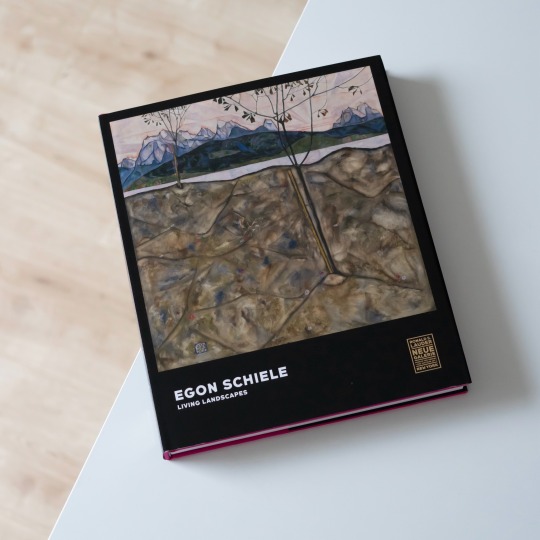
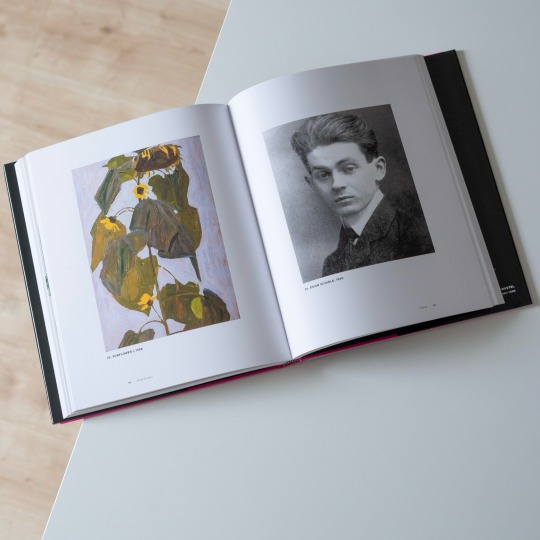
Despite constituting Egon Schiele’s largest body of work, his landscapes, townscapes and depictions of fauna are vastly overshadowed by his famous portraits and nudes. This circumstance is all the more regrettable since they are an indispensable part of his work that, just like his portraits, investigate the conditio humana and are charged with symbolism. Predominantly painted during the less intensive seasons spring and fall the paintings tell of the blossoming and fading of nature, a well-known allusion to the ephemeral nature of life itself. Gnarled trees with good reason are reminiscent of Schiele’s depiction of human bodies and the frequently returning sunflowers are shown in the different stages of their life cycle. In the figurative sense this also applies to his townscapes of which some seem to be fictitious but most are observations of a limited amount of towns. he created during escapes from bustling Vienna: on several occasions Schiele painted his mother’s birthplace Krumau, a picturesque medieval town, from different vantage points and often in invented configurations. In „Tote Stadt III [City on the Blue River]“ for example he manipulated the topography in such a way that a group of houses is on three sides surrounded by the black Moldau, giving the painting an oppressive and seemingly sealed character in which the river takes on the role of a menacing danger.
The aforementioned painting also is part of the Neue Galerie New York’s current exhibition „Egon Schiele: Living Landscapes“ running through January 13, 2025, and presenting a large number of Schiele’s landscapes and nature-related works. As usual the accompanying catalogue has been published by Prestel and, besides reproducing the works included in the exhibition, provides in-depth insights into Schiele’s enigmatic works: curator Christian Bauer e.g. explains the symbolic dimension of his landscapes while Franz Small delves deep into characteristics and underlying allusions of his townscapes, a great help for reading and understanding this body of work that is so worth discovering! Warmly recommended!
#egon schiele#expressionism#modern art#austrian art#art book#prestel#art history#exhibition catalogue#book
33 notes
·
View notes
Text
#listening to hassan today#things to use in a scarlet type project#diary#what i should've been looking at for jiyoon lol#also kind of zero doodles adjacent#atelier > wedge
0 notes
Link
Check out this listing I just added to my Poshmark closet: Talking Fashion Book.
0 notes
Photo

Reposted from @cathleennaundorf Last print ! Size 20x30 cm Silver gelatin print. Signed,stamped. Edition of 2. Photograph » My Paradise bird » Published in my books. The Polaroids of Cathleen Naundorf » Prestel 2012 , « Woman of singular beauty - Chanel Haute Couture »Rizzoli 2018. 💫 1200 Euro incl. Tax and shipping. ✨ Order: Dm me or [email protected] #cathleennaundorf #artwork #fineartphotography #fineartphotographer #fashionphotography #hautecouture #chanelhautecouture #bkackandwhitephotography #photocollection #contemporaryart #classicphotography #karllagerfeld #artbasel #parisphoto #armoryshow #miamiart #parisianstyle @miamiartbasel @aipadphoto @parisphotofair @london_photo_fair #paris #london#eugenelacroix1 @eugenelacroix1 #photography https://www.instagram.com/p/CoXC0VNo4Ka/?igshid=NGJjMDIxMWI=
#cathleennaundorf#artwork#fineartphotography#fineartphotographer#fashionphotography#hautecouture#chanelhautecouture#bkackandwhitephotography#photocollection#contemporaryart#classicphotography#karllagerfeld#artbasel#parisphoto#armoryshow#miamiart#parisianstyle#paris#london#eugenelacroix1#photography
0 notes
Text
Olaf Hajek gives veggies their due: Veggie Power!
Olaf Hajek gives veggies their due: Veggie Power! @presteljunior @mediamastersbks
Veggie Power, by Annette Roeder/Illustrated by Olaf Hajek, (Apr. 2021, Prestel Junior), $19.95, ISBN: 9783791374789 Ages 8-12 After profiling nature’s healing flowers in last year’s Flower Power, artist Olaf Hajek turns his illustrative magic to elevating vegetables to high art in Veggie Power. Seventeen vegetables receive the portrait treatment here, with Annette Roeder’s informative discussions…

View On WordPress
1 note
·
View note
Text
Photographer Research Post 8
The Rising Star: Nadine Ijewere
Nadine Ijewere is the creator of new waves of mixing fashion and portraits. She was born in London and raised in Nigeria and Jamaica. She reflects the theme of identity, diversity, and beauty in her artwork. She is the first woman from the black community to work on a Vogue magazine cover. Her famous image is Dua Lipa for the British. Especially Vogue magazine is famous for its unique style, and vibrant colors and is celebrated for its representation of nontraditional beauty standards.
She is known for using bold colors, textures, and natural light in her artwork. One of her famous series is Tallawah which was released in 2020 and was inspired by her Jamaican heritage. She captured the faces of women who were wearing traditional and contemporary styles, against the tropical backdrops. Every single image represents joy and pride. They have a vivid tone of fabrics and lush green of the environment. They have various sizes ranging from medium to large which help viewers to see every detail in photographs.
After watching her photographs, I was amazed by her subject and the way of captured portraits with dignity. They feel personal and every frame has a different story. Which I admire most. The way of mixing fashion and culture seamlessly, making stunning visuals and deep meaning inspires me to think about my artwork and pushes me to integrate elements of my own heritage and experiment with it in my design, photography, and animation.
Her work is exhibited in some major venues like the National Portrait Gallery in London and the Aperture Foundation in New York. She has also collaborated her work with some famous brands like Gucci and Dior. Where It brings freshness and premium looks. She also published a book named Our Selves in 2021, which talks about her skills and experience.
If anyone wants to know about her work and skill, I recommend following her website and published interviews, featured in The Guardian and Vogue. This could be the great place to go for insights and know about her challenges to traditional beauty norms and inspired upcoming generations
References
"Our Own Selves" – Prestel Publishing, 2021.
The Guardian, profile on Nadine Ijewere, 2020.
British Vogue, "Dua Lipa Cover Story," 2018.
National Portrait Gallery, exhibition details, 2020. image source: https://assets.vogue.com/photos/5e2b2213dab24500085f1f43/master/w_1920,c_limit/01-NI_Jamaica_2316-03.jpg
0 notes